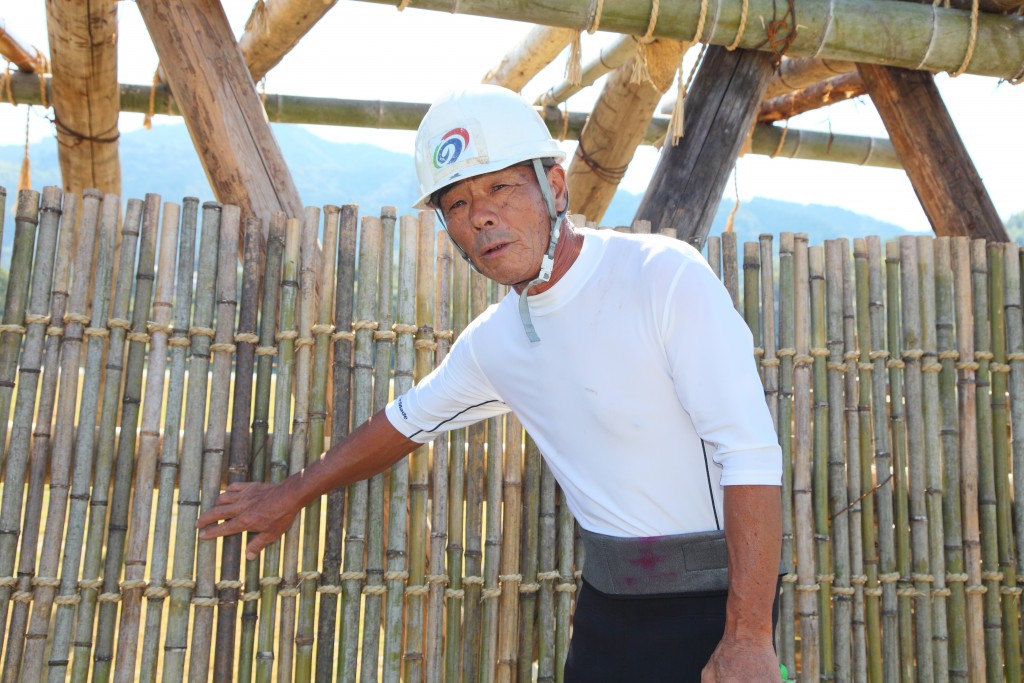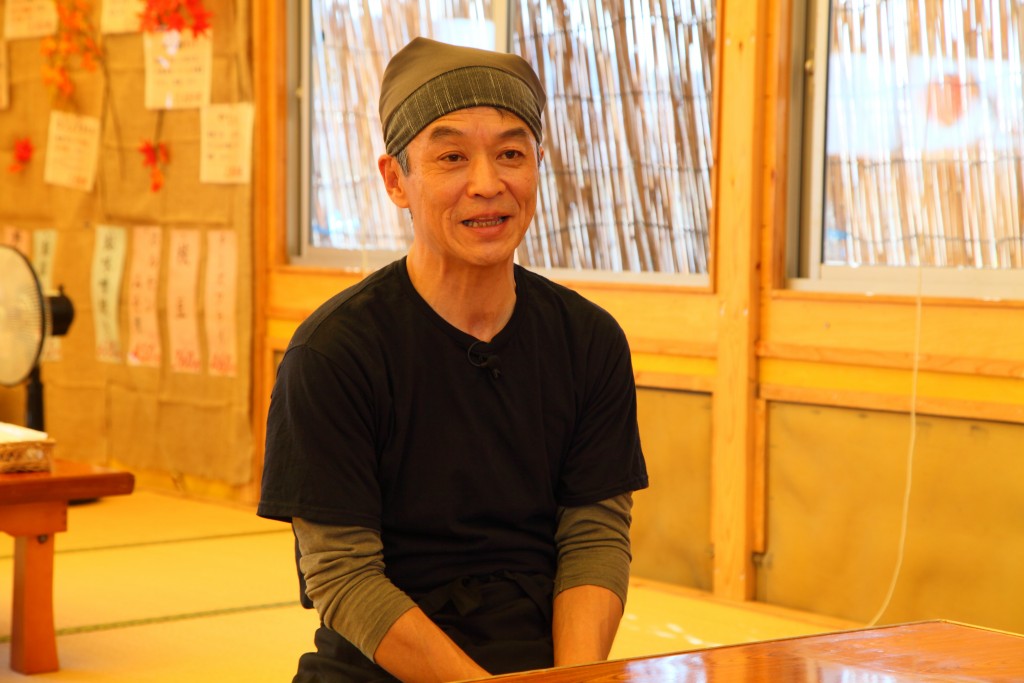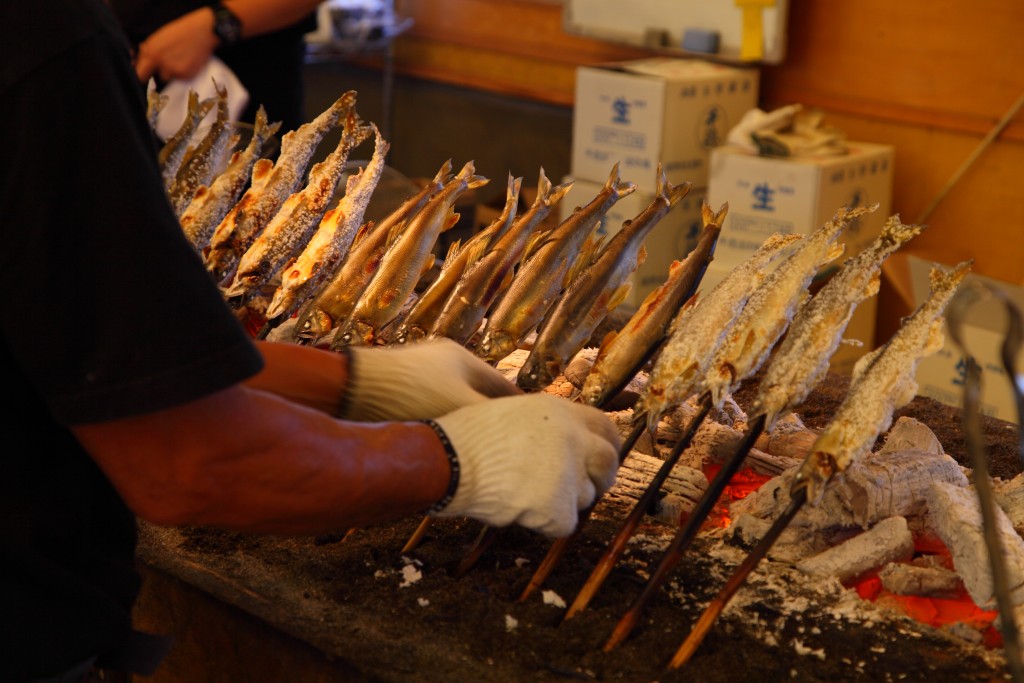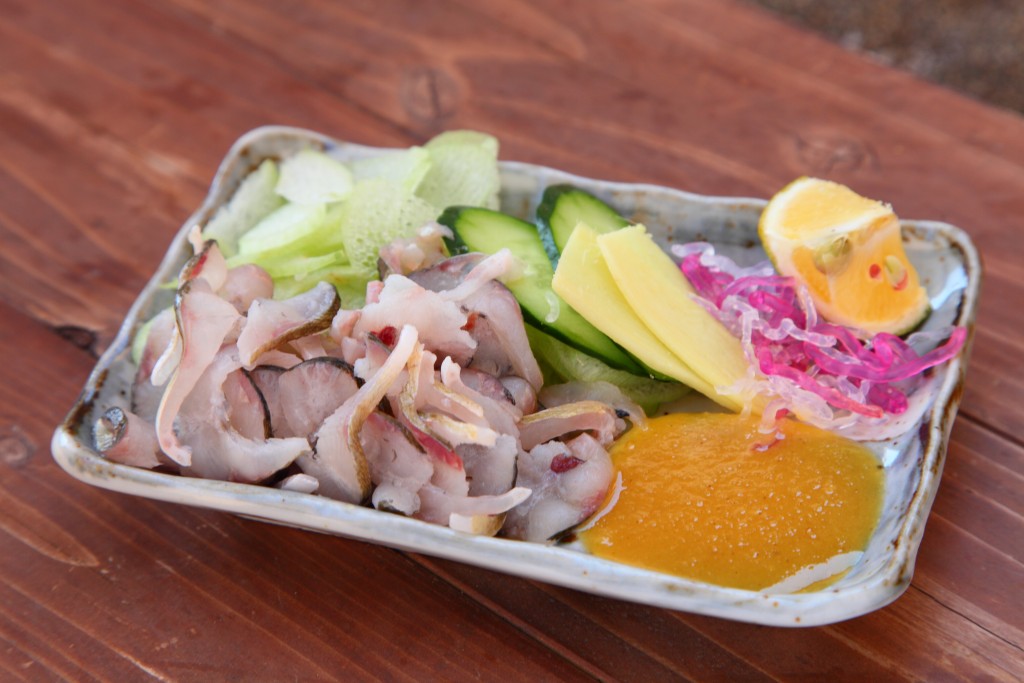TRAVELOGUE Miyazaki
The temperate climate of southern Japan is home to a treasure trove of ingredients
- text : Rie Tanaka
- photo : Nobuya Motoi
- edit : Seiji Takeuchi (nano. associates)
chapter 2 “Sweetfish weir fishing: Where craftsmanship, history and a crystal clear stream meet. ”
The city of Nobeoka is reachable from Miyazaki city by travelling north on the East Kyushu Motorway. The weir fishing facility we are headed for is 15 minutes drive from the Nobeoka interchange and is loated on the Osegawa river. Called the “Nobeoka Suikyou Sweetfish Weir Fisheries”. The city of Nobeoka and others located in the north of Miyazaki prefecture are fed by crystal clear rivers and government protected ‘waterways of special significance’ that are part of the greater Gosekawa network of rivers. The network basin fills with sweetfish going downstream to spawn from around October, and this is when the weir fishing spaces spring into being, constructed out of rock and bamboo. A harbinger of the fall season, we spoke with traditional weir fisherman and expert Seiya Takahashi to tell us more.
“Anyone can construct a weir fishing platform. However, the real skill lies in if your platform is still standing 2 or 3 months later, and has taken the rivers currents and movements in to consideration.” Seiya was taught his construction skills from his father when he was about 17 years old, but it has taken him many years since then to construct durable platforms which are optimized to current flow for maximum sweetfish catch. This river has been Seiya’s playground since he was a child, and his intimate knowledge of the river and even the spawning patterns of the sweetfish give him a real experts insight.
“Spawning sweetfish are renowned for looking, smelling and tasting good”
Close to the platform, an ad hoc barbecue grills the freshly caught fish. The sweetfish of Nobeoka have even been chosen as one of the ‘100 best fragrances of Japan’. Toshio Takeuchi of “Nobeoka Suikyou Sweetfish Weir Fisheries” and “Sweetfish Restaurant Kokugikan” tell us “the area was known for sweetfish as far back as the Heian period (AD794 – 1185), and in the Edo period (AD1603-1868), Nobeoka sweetfish were sent to the shogunate Government in the capital city as gifts and offering. The appearance, fragrance and taste of the fish were all greatly appreciated by the cosmopolitans.”
The sweetfish can be eaten locally at restaurants that dot the river bank grilled with salt, with miso, sliced finely, candied or deep fried. Nobeoka does not boast any distinct or unique preparation method of the fish, but the beauty lies within the intrinsic relationship between the history of the land and its relationship with the fish.
Next we move westward from Nobeoka in to the mountains. What kind of natural abundance and delicious treats will we find there? We headed for Shiiba village, written about by father of modern Japanese native folkloristics, Kunio Yanagita.







